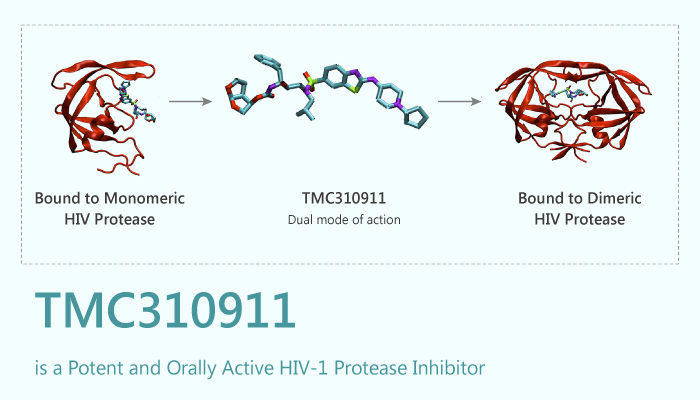The human immunodeficiency viruses (HIV) are two species of Lentivirus that infect humans. It causes acquired immunodeficiency syndrome (AIDS). Besides, AIDS is a condition in which progressive failure of the immune system allows life-threatening opportunistic infections and cancers to thrive. Moreover, inhibition of HIV-1 proteases has been an important strategy for blocking the progression of HIV-1 infection. Furthermore, this has led to the development and widespread use of several protease inhibitors (PIs) as antiretroviral therapy (ART). HIV infects vital cells in the human immune system, such as helper T cells, macrophages, and dendritic cells. Specifically, HIV-1 enters cells through binding between viral envelope glycoprotein (Env) and cellular receptors to initiate the fusion of virus and cell membranes. Thus, the introduction of more efficacious, convenient, safer, and better-tolerated antiretroviral agents for the human immunodeficiency HIV-1 infection is important. TMC310911 is a potent and orally active HIV-1 protease inhibitor.

But, how does TMC310911 inhibit HIV-1 protease? Let’s study it together. In the beginning, TMC310911 inhibits wild-type HIV-1 with EC50 values ranged from 2.2 nM to 14.2 nM. In addition, TMC310911 has potent activity against a wide spectrum of recombinant HIV-1 isolates. Meanwhile, TMC310911 has strong antiviral activity. The TMC310911 EC50 values against HIV-1/LAI and HIV-2/ROD in MT4 cells with EC50 values of 14.2 nM and 2 nM, respectively. Nonetheless, TMC310911 shows an improved resistance profile and a higher genetic barrier to resistance compared with current protease inhibitors in vitro. Importantly, TMC310911 represents a potential drug candidate for the management of HIV-1 infection for a broad range of patients, including those with multiple PI resistance. All in all, TMC310911 is a potent and orally active HIV-1 protease inhibitor with strong antiviral activity.
References:
Dierynck I, et al. Antimicrob Agents Chemother. 2011 Dec;55(12):5723-31.